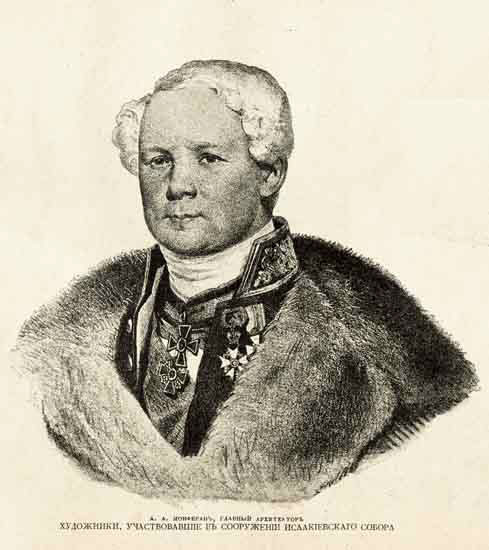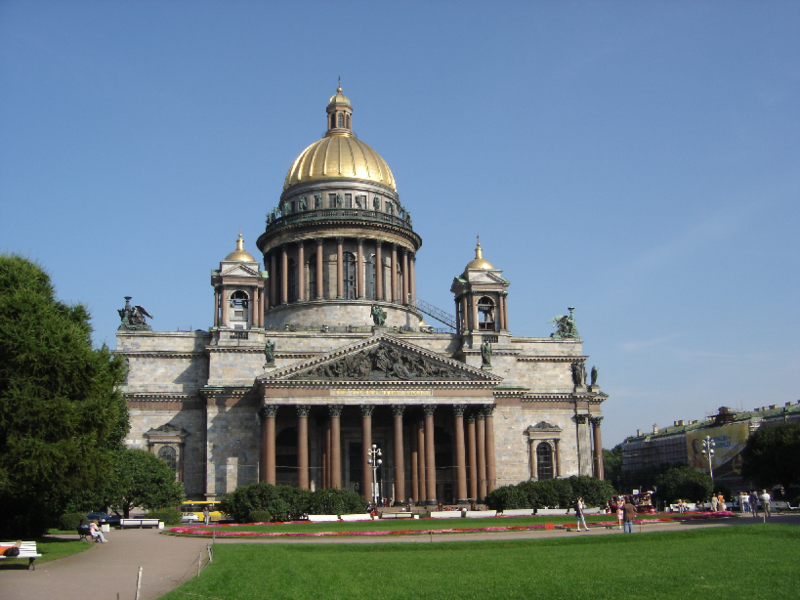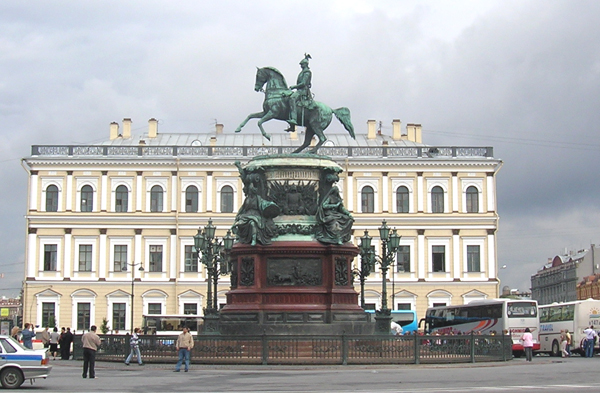<Back to Index>
- Mathematician David Hilbert, 1862
- Architect Auguste de Montferrand, 1786
- Queen of Sweden Ulrika Eleonora, 1688

Auguste de Montferrand (January 23, 1786 – July 10, 1858) was a French Neoclassical architect who worked primarily in Russia. His two best known works are the Saint Isaac's Cathedral and the Alexander Column in Saint Petersburg.
Montferrand was born in paroisse of Chaillot, France (now, 16th arrondissement of Paris). He was styled at birth Henri Louis Auguste Leger Ricard dit de Montferrand. His father, Benois Ricard, was a career horse trainer, that died when Auguste was a child. Grandfather, Leger Ricard, was a bridge engineer. Mother, née Marie Francoise Louise Fistioni, remarried Antoine de Commarieux, who is credited with educating Auguste.
In 1806, Montferrand joined the former Académie d'architecture, class of Charles Percier and Pierre Fontaine. Soon, he was summoned to Napoleon's Army, and served a brief tour of duty in Italy. Montferrand married Julia Mornais in 1812. The next year, he was again drafted into the Army when the allied troops were closing in on Dresden. Montferrand served with distinction in Thuringia engagements, and was awarded Légion d'honneur for valor in the Battle of Hanau.
When hostilities ended, new construction in defeated France was out of the question. Montferrand worked on a few unimportant jobs, spending three years in basic draftsmanship and seeking opportunities overseas. In 1815, he was awarded an audience to Alexander I of Russia and presented the Tsar with an album of his works. Post-war Russia presented a wealth of opportunities.
In summer 1816, Montferrand landed in Saint Petersburg, carrying a recommendation letter from Abraham Louis Breguet. He rented a room near the house of Fyodor Wigel, the secretary of Construction Commission, and applied to Agustín de Betancourt,
the chairman of this commission (and a partner of Breguet in 1790s).
Betancourt, impressed by Breguet's letter and Montferrand's drawings,
offered him the desk of Head of Draftsmen, but Montferrand preferred a
lower rank of senior drafrsman. December 21, 1816 he officially joined
the Russian service.




Monferrand divorced with his first wife soon after settling in St.Petersburg. Divorce and extravagant lifestyle caused him a lot of debts; in 1831 he refinanced it with a loan from the Tsar's Cabinet. In 1834 he was awarded a lifelong pension and a 100,000 lump sum, enabling him to settle all accounts and build his own house. As his finances improved, Montferrand became a compulsive collector of arts and amassed 110 Greek and Roman statues and hundreds of lesser items. Witnesses reported that "any Sunday he indulged in rearranging the statues, using 25 laborers from 9 a.m. to lunch time". When Monferrand died, the Hermitage Museum failed to buy out the collection, and it dispersed.
In 1835, Montferrand married Elise Debonniere, an actress who arrived in Saint Petersburg nine years earlier. The relationship began in 1820s and lasted until his death. The Montferrands adopted Henri, Elise's nephew.
Auguste de Montferrand died in Saint Petersburg in 1858, the year St. Isaac's Cathedral was completed. His will to be buried in the vault of that cathedral could not be executed, because he was not of Orthodox faith. His body was returned to France and was buried in the Cimetière de Montmartre, Paris, France, next to his mother. The grave, once believed to be lost, was identified in 1986 in Chemin des Gardes row. It bears the name Louise Fistioni and AM, Montferrand's initials.